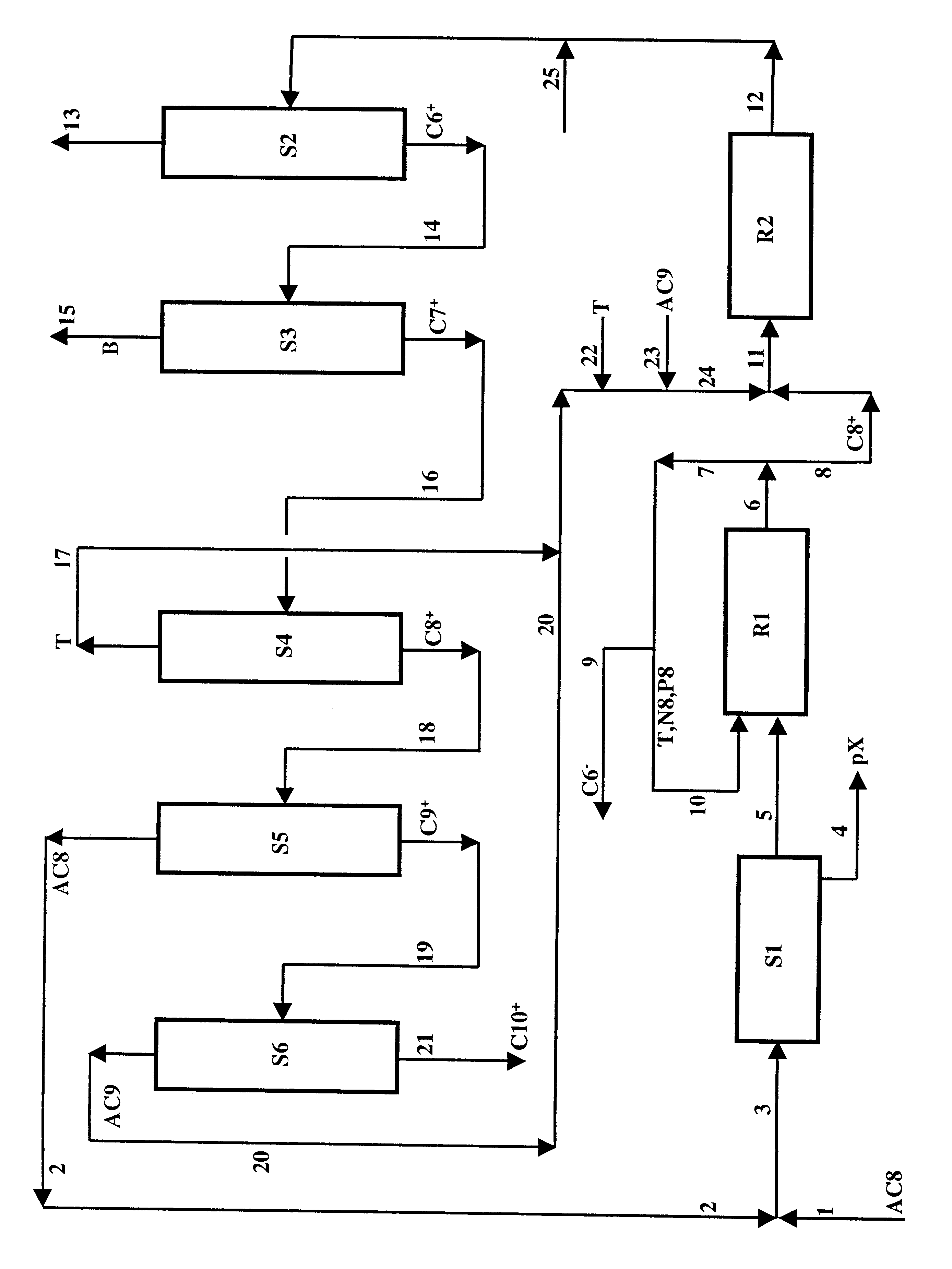Process for the production of an isomer of xylenes in three stages: separation, isomerization in the presence of a catalyst based on an EUO zeolite and transalkylation
a technology of xylene isomer and three-stage separation, which is applied in the direction of hydrocarbon preparation, molecular sieve catalyst, hydrocarbon preparation, etc., can solve the problem of not being able to maximize the production of the desired xylene isomer
- Summary
- Abstract
- Description
- Claims
- Application Information
AI Technical Summary
Benefits of technology
Problems solved by technology
Method used
Image
Examples
examples
Example According to the Invention
The following example that illustrates the invention is carried out according to FIG. 1.
The fresh feedstock of aromatic hydrocarbons (1) has the following composition (% by weight):
The treated mixture in the zone for separating xylenes (S1) consists of 20% by weight of fresh feedstock (1) and 80% by weight of aromatic compounds with 8 carbon atoms that are obtained from the effluent of transalkylation zone (2).
At the inlet to separation zone (3), the aromatic compounds with eight carbon atoms are in the following proportions (% by weight):
The separation of paraxylene (S1) takes place under the following condiions:
desorption in a simulated countercurrent moving bed (stand-alone version):
The paraxylene that is recovered as extract (4) has a purity of 99.8% and a yield of 95.4% or 20.6% by weight of paraxylene that is collected relative to the feedstock that is treated in the separation zone.
Raffinate (5), after distillation of the desorption solvent (...
PUM
| Property | Measurement | Unit |
|---|---|---|
| grain size | aaaaa | aaaaa |
| size | aaaaa | aaaaa |
| pressure | aaaaa | aaaaa |
Abstract
Description
Claims
Application Information
 Login to View More
Login to View More - R&D
- Intellectual Property
- Life Sciences
- Materials
- Tech Scout
- Unparalleled Data Quality
- Higher Quality Content
- 60% Fewer Hallucinations
Browse by: Latest US Patents, China's latest patents, Technical Efficacy Thesaurus, Application Domain, Technology Topic, Popular Technical Reports.
© 2025 PatSnap. All rights reserved.Legal|Privacy policy|Modern Slavery Act Transparency Statement|Sitemap|About US| Contact US: help@patsnap.com


